Atlantic Salmon are in trouble. Ask anyone invested in their plight and they’ll tell you how bad it is and who’s to blame. It’s always someone else. It’s gotten so bad that Atlantic Salmon in the UK is now officially an endangered species and on the IUCN Red List. In Ireland, the population has collapsed by 80% in 20 years. Other places and other salmon species are not far behind, and the word extinction has entered the debate. I’ve been asking myself how I feel about fishing for Atlantics in our local rivers, where they are officially endangered. The answer is not good. I’ve given up my rod on our local river this season, mostly because there are no fish, or at least none that I can catch (and return).
Just about everywhere the value is slowly ebbing out of fishing for wild Atlantic Salmon, almost no matter how or where we do it, from mega-trawler to rod and line. Sure, we can remove dams and nets, replant catchments and clean up pollution to help mitigate the decline, but it won’t be enough. This crisis is universal, which is of note because not everywhere has nets or fish farms or pollution or management corruption. Indeed, some have none of the above, yet their salmon are also in trouble.
One of Scotland’s most exclusive rivers, the Helmsdale, used to be a place where fishing was accessed via dead men’s shoes. Royalty graced its banks and the management was so discreet as to be almost uncontactable by the world outside. A rod on the Helmsdale was a mark of status. Now the river is running promotional pieces in glossy sporting magazines in the hopes of attracting custom. The Helmsdale has gaps to fill, but it has no pollution and no fish farms. Something else is wrong.
What the salmon in all these places have in common is rising water temperatures. This is happening both at sea and in rivers. High temperatures impact salmon negatively at every stage of their lifecycle, from squeezed and collapsing ocean food chains to overheated redds and undernourished smolts failing to make the journey back to sea. The salmon life cycle makes them especially vulnerable.
This is not controversial. It’s real and it’s happening everywhere. Check out the Missing Salmon Alliance for a great breakdown on these combined threats. Their rallying call is Cold, Clean Water, which is as succinct a summary of the salmon’s plight as you can find anywhere.
And it’s not just Salmon: Entire food chains are wobbling. 10 billion snow crabs are missing from Alaskan waters and the most plausible explanation is starvation in warming seas. A few years ago 100 million Alaskan cod went AWOL for the same reason: Warmth increases fish and crustacean metabolic rates, so they have to eat more just to maintain body weight. At the same time, the warm water suppresses growth in their food supply. So they need more, get less and starve. It’s becoming a regular feature of ocean life.
To understand why, we need to do some time travelling, because today’s benign weather wasn’t always a given. Our ancestors had a much tougher time than us. About 17,000 years ago the world was in the depths of the last Ice Age. We humans scraped a marginal existence as hunter-gatherers. Life was freezing and the world was a whopping 5c colder than nowadays.

We hit our stride about 10,000 years ago when the climate warmed and delivered a sweet spot that stuck. We could sow crops, expect to harvest them and feed our expanding population. Great civilisations formed. We could also hunt and fish for nature’s seemingly boundless resources such as the herbivores that roamed the plains and the fish and whales in our seas. The post-glacial world was rich in opportunity.
This is the Holocene Era: The time when the Earth and its climate became good for humans. There were blips along the way: a few major volcanic eruptions that caused cooling and short-term global famines, for example. But since the end of the Ice Age, Planet Earth’s climate has been stable and very hospitable.
Then came the Industrial Revolution and the arrival of the fossil fuel era. We are about 250 years into it now — the red zone below.

Current predictions are that temperatures will likely peak at about +2-3C, with growing confidence that it will be a lot closer to 2C than 3C. The hoped-for 1.5C target is surely a lost cause.
We have understood the basic science behind this since the mid-1800s. It’s not difficult: Excess CO2 is pollution that traps heat in the atmosphere. We can measure it very accurately. We know the science is good and that what’s happening now is unfolding as scientists predicted it would (my first TV report saying the Holocene could unwind was nearly 30 years ago, and I was in Antarctica reporting established science, not breaking new ground). The scientists even got the speed of change about right, although as a layman I’m shocked by the rate we’re seeing now:
We’re hitting temperatures not seen for 125,000 years and it’s going to get worse. When we stop pumping out CO2, we will revert to a long, slow cooling trajectory. It will take thousands of years to get back to where we were just 250 years ago. That’s one heck of a hangover from our CO2 party and we’re giving it to future generations.

It’s not all bad news. Climate skepticism is fading, clearing the way for better political engagement. The graphic below shows that only the 10 percent or so on the margins are still drinking neat Clorox. This group are mostly hard-core conspiracy theorists and you’d think climate doomsterism would be right up their victim-centric street, but I don’t think they will ever shift their position by much. The remaining 90 percent of us are increasingly concerned about climate change.

So where does this leave the salmon?
We can do a great deal to adapt to and mitigate the impacts, but the bottom line is that we’re stuck in a pattern of decline that won’t end until we tackle the root problem. The Earth is getting too warm and it’s happening too fast for the fish to adapt.
Ask an Atlantic Salmon. If you can find one …




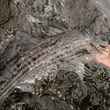





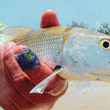



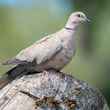
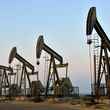








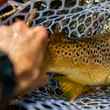





Comments
Drew Irby replied on Permalink
My wife and were recently touring the Highlands in Scotland. We set aside a day to flyfish-somewhere-out of Inverness. We were told September was a good month for salmon. Unfortunately, we picked the hottest week and the day we went hit 83F, rare for that latitude. Not a rise to be had.
Had some good single malt whiskey which was the only saving grace.
Pages